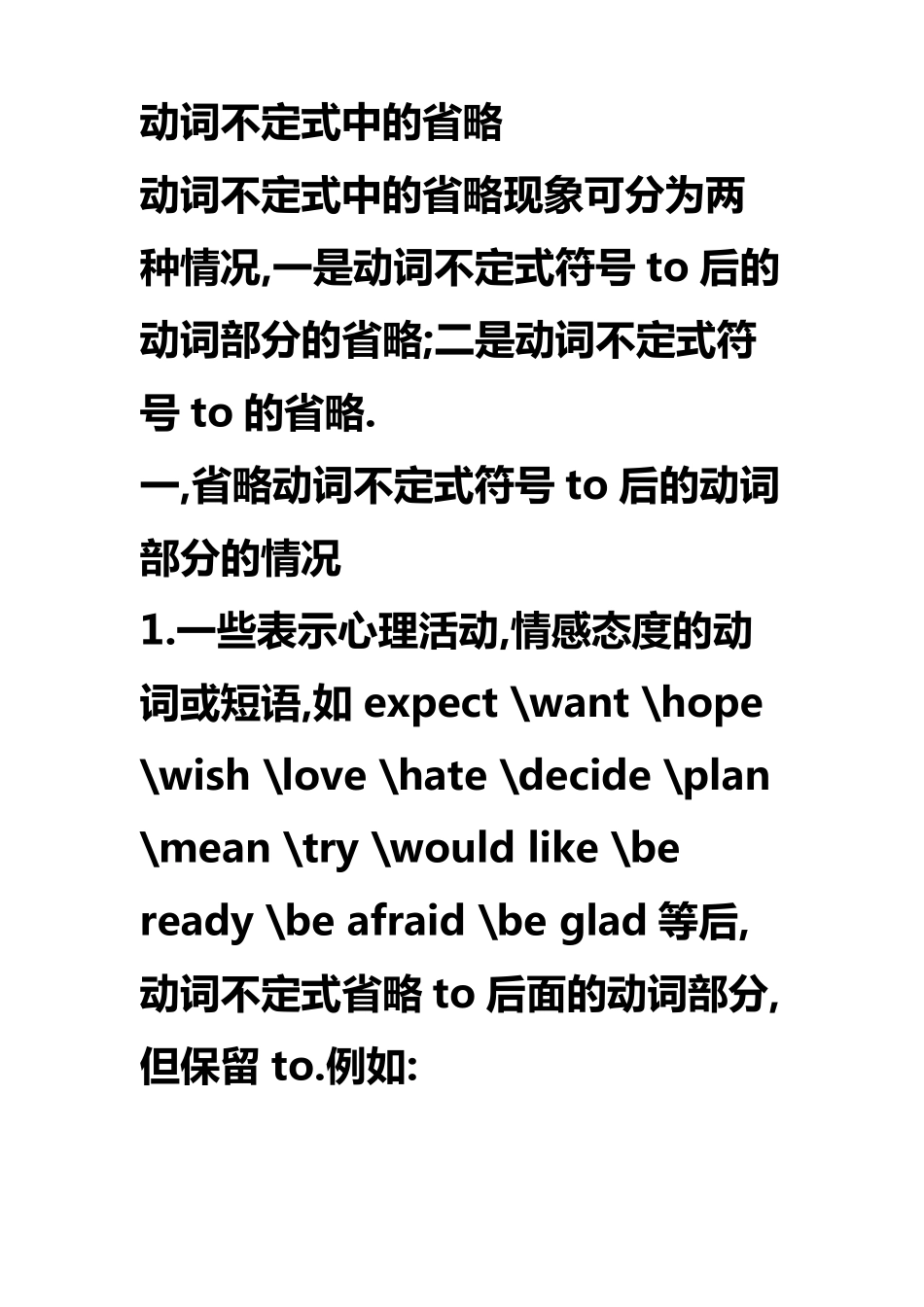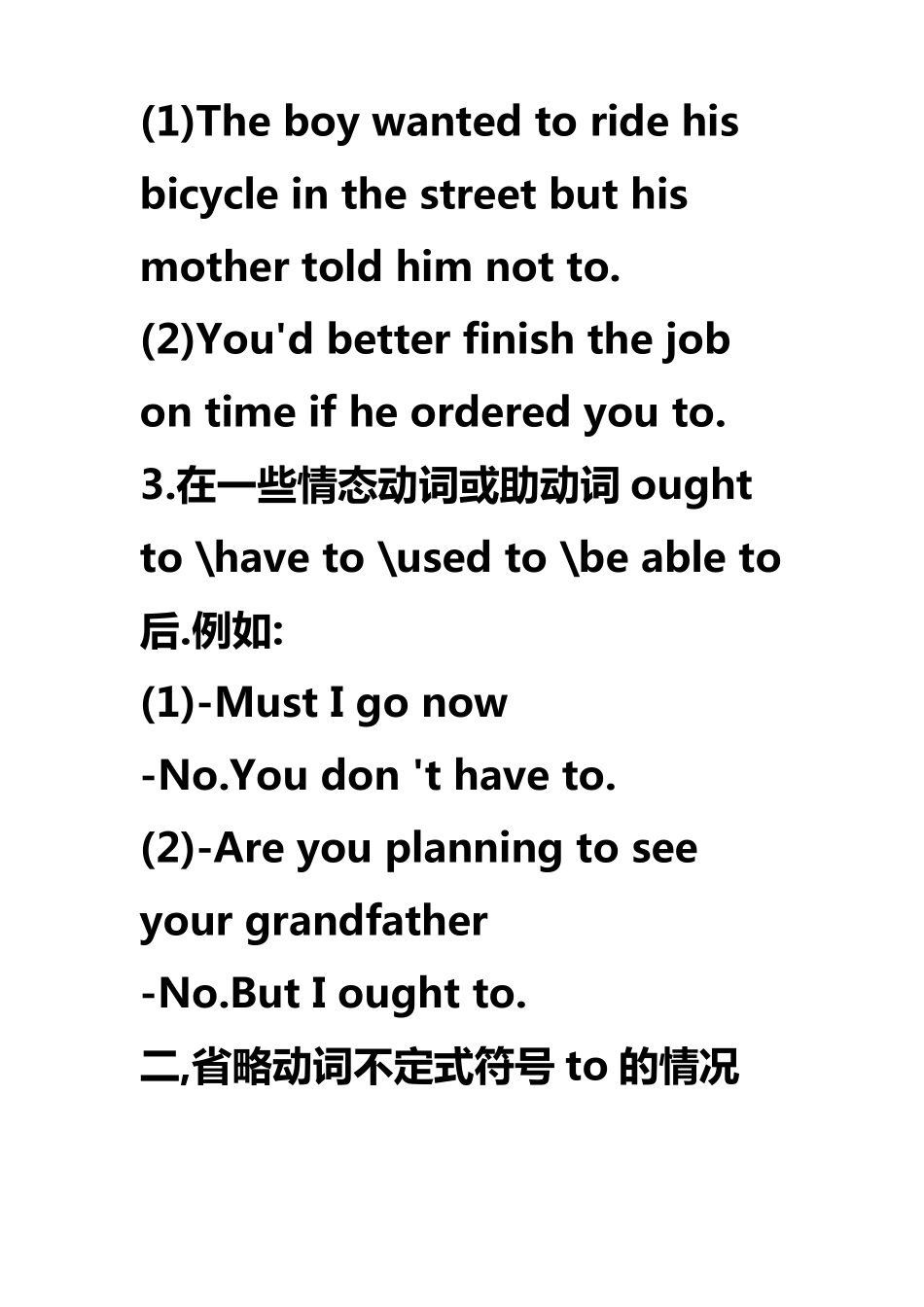动 词 不 定 式 中 的 省 略 动 词 不 定 式 中 的 省 略 现 象 可 分 为 两种 情 况 ,一是动 词 不 定 式 符号 to 后的动 词 部分 的 省 略 ;二是动 词 不 定 式 符号 to 的 省 略 . 一,省 略 动 词 不 定 式 符号 to 后的 动 词部分 的 情 况 1.一些表示心理活动 ,情 感态度的 动词 或短语,如 expect \want \hope \wish \love \hate \decide \plan \mean \try \would like \be ready \be afraid \be glad 等后,动 词 不 定 式 省 略 to 后面的 动 词 部分 ,但保留 to.例如: (1)-I 'll be away on a business trip.Would you mind looking after my dog -Not at all .I'd be glad to. (2)-Will you go with me -Well ,I 'd like to. (3)-Will you go home tomorrow -No.I 'm going to a lecture,or at least I am planning to. 2.不定式作宾语补足语时,省略 to 后的动词部分,即用 to 代替整个不定式.例如: (1)The boy wanted to ride his bicycle in the street but his mother told him not to. (2)You'd better finish the job on time if he ordered you to. 3.在 一些情态动词或助动词 ought to \have to \used to \be able to后.例如: (1)-Must I go now -No.You don 't have to. (2)-Are you planning to see your grandfather -No.But I ought to. 二,省略动词不定式符号 to 的情况 1.动 词 不定式作感官动 词 feel \see \notice \watch \find \hear \listen to \observe 和使役动 词have \make \let等的宾语补足语时,动 词 不定式符号 to 省略.如果这些动词 用于被动 语态,其后的动 词 不定式符号 to 不能省略(但 let 除外).例如: (1)We often hear him sing the song at home . (=He is often heard to sing the song at home.) (2)The y knew her very well.They had seen her grow up from childhood. (=They knew her very well.She was seen to grow up from childhood.) 注 意 : get 作 "使 ,让 ,叫 某 人 做 某 事 "时 ,要 用get sb. to do s t h.结 构 .例 如 : Mother got Tom to bu...


